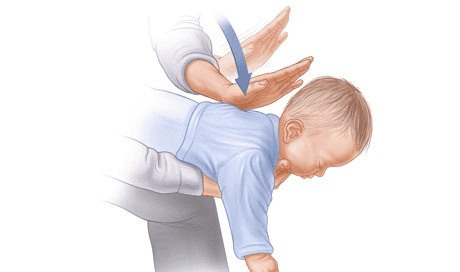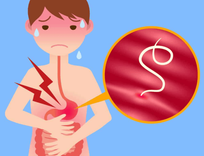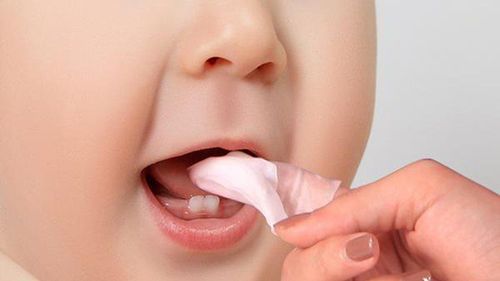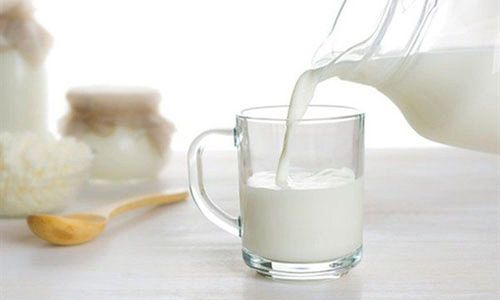Professor, Doctor Pham Nhat An, Director of the Pediatric Center and Head of the Pediatrics Department at Vinmec Times City International General Hospital, provided professional consultation on the article.
Milk choking is an extremely dangerous but common accident for infants. Its consequences are severe if not treated immediately. As a result, providing knowledge on the prevention and treatment of milk choking to those who directly care for children is essential. The directions below are from Professor, Doctor Pham Nhat An, Director of the Pediatric Center at Vinmec Times City Hospital.
Milk choking occurs when a child inhales milk into the airways; milk overflows into the trachea, bronchi, and even the alveoli, blocking the respiratory tract or blocking the process of gas exchange between the alveoli and capillaries, causing the child to lack oxygen due to respiratory obstruction.
1. Typical signs of a child choking on milk
- The child is breastfeeding or lying down (after eating) when he abruptly coughs, turns cyanotic, and faints.
- Milk may leak from the nose and mouth.
The infant is in distress; his skin is pale and may be limp or stiff. - In severe circumstances, the child may apnea.
2. How to care for a child choking on milk.
- Back pats. Quickly position the child on his stomach with his head low, support his head, tilt his face to the side, and pat 5 times in a succession, powerful enough to touch the area between the child's shoulder blades in a downward and forward motion. After patting, gently flip the infant over to examine whether he can breathe on his own and if his skin has pinked. If the child hasn't recovered, apply chest compressions.
- Chest Compressions: Maintain the child's supine position and use the 2nd and 3rd fingers of the left hand to press perpendicularly down to the bottom 1/3 of the sternum, about 1 finger width below the line joining the two nipples. Press once every second; press forcefully 5 times in a row.
- Continue to monitor symptoms of recovery; if the kid has not recovered, continue to pat the back and squeeze the chest until the child does (maybe 6-10 times).
- To clear the airway, suction the nose and mouth. Clearing the child's airway is required while performing back pats, which involve squeezing the chest. Suck the child's nose and mouth with a suction device, beginning with the mouth and progressing to the nose. If the emergency occurs at home and no suction apparatus is available, the rescuer can use his mouth to swiftly suck the infant. Even when the infant has recovered, take him to the nearest medical center for additional monitoring.

3. Directions for avoiding choking on milk
Do not feed the infant while he is crying, coughing, eating, sleeping, or playing; holding the breast in his mouth but not swallowing and inhaling quickly might cause milk to run into the airway; and when the child laughs, he can easily choke.
When there is an excess of breast milk, you should clamp the nipple when feeding the infant, use a rubber nipple with a sufficient aperture, and avoid pouring milk straight into the baby's mouth or rapidly; when breathing hard, the milk can flow into the airways.

The Pediatrics Department at Vinmec International General Hospital system receives and examines ailments that newborns and young children are prone to, such as viral fever, bacterial fever, otitis media, and pneumonia in children. With sophisticated equipment, a sanitary environment, and a focus on limiting the effect and danger of disease transmission. Along with that, competent doctors dedicate their time to pediatric patients, making examinations less stressful for parents.
Please dial the HOTLINE for more information or to book an appointment HERE. Download the MyVinmec App to book appointments faster and manage your bookings easily.















